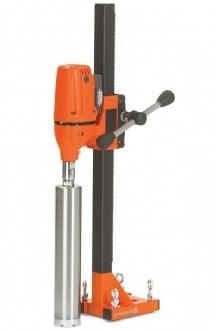A hole conductor is a tool used in mechanical engineering to simplify the process of machining a part. In fact, it is a template that serves to guide the cutting tool, or to position the workpiece. It can be used on various equipment, for example, such as a drilling machine or diamond drilling machine .
In machine-building production, conductors are fairly accurate devices (up to 0.05 mm (depending on the requirements for the manufactured part)). They come in two main types: overhead (in the form of plates) and box-shaped, which are three-dimensional structures. Mixed drilling conductors are also found. These devices are used to reduce the complexity: the marking operation is removed from the technological process of processing the part, in addition, it becomes possible to drill several holes at the same time.
The drilling conductor is used only in serial and mass production. This is due to the fact that for a small batch of parts it is impractical to produce a separate device, which, moreover, will have to be separately installed and configured.
A drilling conductor is typically used to process several holes lying in the same plane. It is best if the parts are standardized by size, this will allow the use of a device for a wide range of products.
The conductor for drilling is also used in light industry and construction. Such devices are only laid on type, are made of sheet steel or lighter materials, such as wood or plexiglass. These products are not designed for greater accuracy, the positioning error is only ± 0.5 mm. But this is more than enough to make holes for furniture fittings or to drill a series of holes in the wall of a house. As equipment, use a conventional drill or bench type drilling machine.

You can independently make a conductor for domestic needs. It will be needed during repairs, when you need to make many holes of the same type and there is no desire to spend time on preliminary marking. For its manufacture, you can use any materials at hand: on a metal sheet or wooden board, outline and drill all the necessary holes that will serve as guides. If necessary, a plumb line is additionally made so that the chips or concrete chips do not fall to the floor. You can make a conductor without dust when the template is covered with a specially fitted half of a plastic bottle.
The main advantages of these devices are high accuracy of hole positioning without preliminary marking, high labor productivity and reduction of perpendicularity deviation (due to guide bushings). However, the use of a conductor for drilling is not always economically justified, especially with small batches of parts in production.